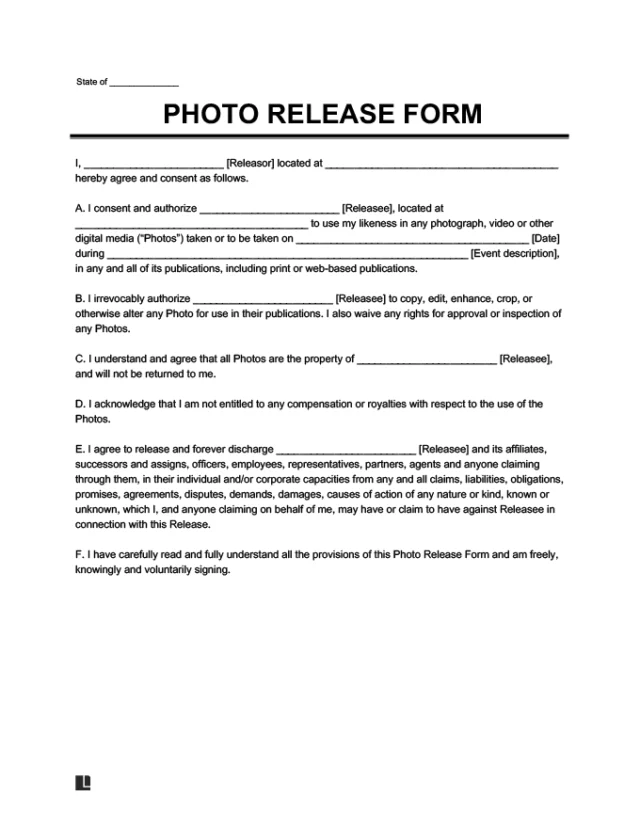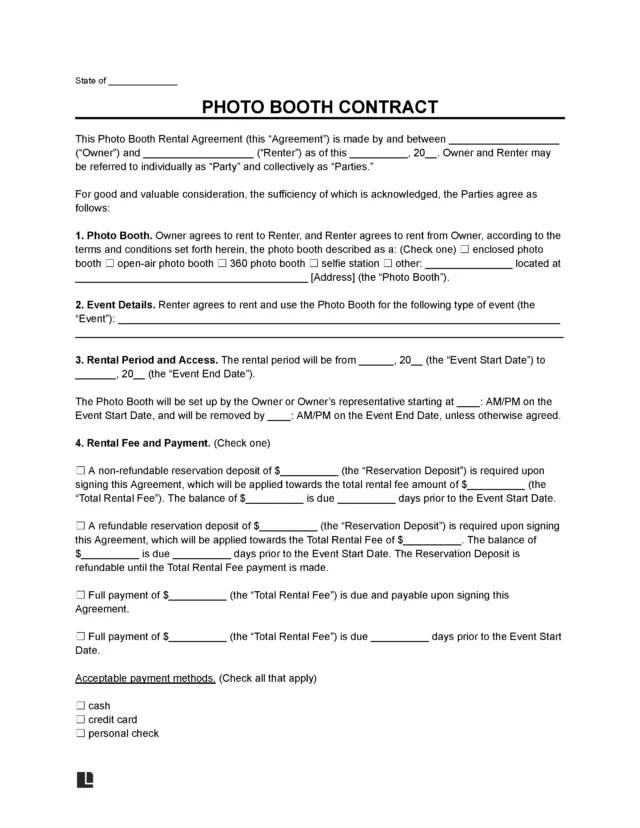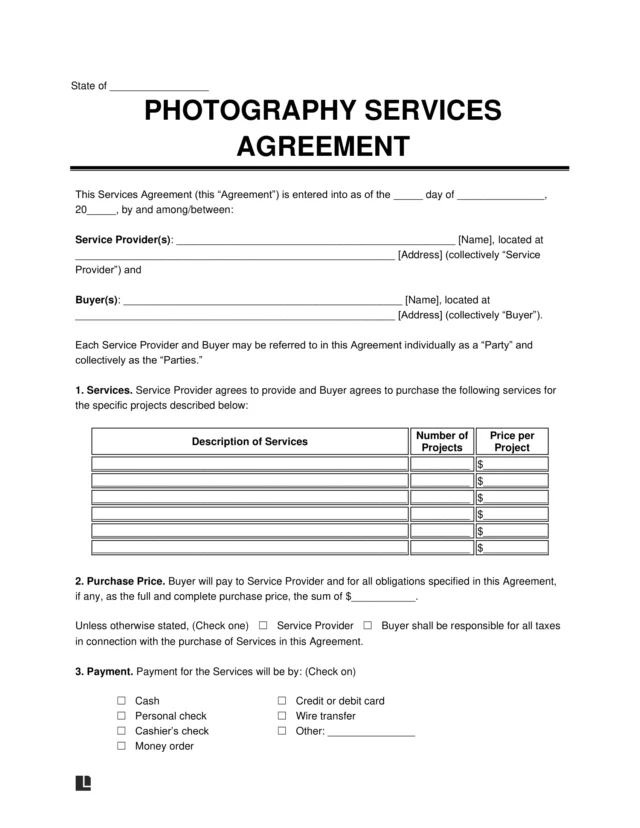What Is a Photo Licensing Agreement?
A photo licensing agreement is a legal document that gives someone the right to use a photograph under certain conditions. It is also sometimes referred to as an image licensing agreement or photo usage rights agreement.
The person granting the permission (the licensor) holds the copyrights to the photographs. The person requesting authorization to use the image (the licensee) gets limited photo usage rights. The terms of the agreement determine the extent of these rights.
In a photo licensing agreement, you can clearly outline where, when, and how a photograph can be used. Doing so helps protect you as the owner of the photos and provides legal clarity and protection around their use.
Typically, photo usage rights can cover the following aspects:
- How the image can be used (commercial, editorial, personal)
- Where it can be published (online, print, etc.)
- Whether it can be edited or modified
- If credit is required
When Do You Need a Photo Licensing Agreement?
You should use a photo licensing agreement anytime you want to let someone use your photo without giving up ownership. This agreement helps set clear rules, prevent misunderstandings, and protect your work from misuse. It also ensures that you get paid for your work fairly. You can prepare a photography invoice with Legal Templates to bill someone for the use of your photo.
You may need a photo licensing agreement in the following situations:
- Selling or licensing pictures for commercial use
- Delivering photos to a client through a freelance agency
- Preventing unauthorized use, like being shared or copied without your permission
- Offering stock photos
Even if you’re giving photos away for free, setting clear terms in a licensing agreement can prevent misunderstandings and protect your copyright.
Common Uses of a Photo Licensing Agreement
Photo licensing agreements are used in various industries to define how images can be legally shared, displayed, or sold:
- Retail: If a business or an individual wants to put your photos on merchandise, posters, or prints, a licensing agreement can set rules for how and where they can sell those items.
- Advertising or marketing: You can set clear rules about using your photos in ads or on websites. The agreement can also limit how long your photos can be used for promotional purposes.
- Publishing in articles, blogs, and magazines: Your photos may be used to support a story in a newspaper, blog, or magazine. You can set boundaries around where it can appear, how long it can stay up, and whether you want to be credited.
- Social media and online use: You can use the image licensing agreement to set rules on how your photos can be used online. For example, you can decide if editing is allowed, whether credit is required, and how long the photo can stay posted.
How to License A Photo
If you want to allow others to use your photos without giving up your rights as a creator, you can license your photos. Follow the steps below to do it properly in order to ensure you’re legally protected.
Step 1 – Understand Copyright Ownership
Licensing your photos does not mean giving up ownership. It simply gives someone permission to use your photo under certain conditions. Unless otherwise stated within the licensing agreement, the rights to the photos remain with the photographer. Under 17 USC § 102, the photographer owns the copyrights to their photos as soon as they take them.
There are a few important caveats to keep in mind:
Work made for hire: If you are hired by an employer to take photographs, the employer would be the legal copyright holder under 17 USC § 102. However, if you are employed as a freelancer or independent contractor, you usually keep the copyright, unless there’s a written agreement that says otherwise.
Registration for enforcement: Even though copyright ownership is automatic, you must register your work with the US Copyright Office to sue for copyright infringement in federal court. Registering your work also strengthens your ability to claim damages if your work is misused.
Ideas are not protected by copyright: Note that copyright law only protects the creative expression in your photographs, not the underlying idea, concept, or method. Therefore, you cannot sue another photographer for using your concept or idea in their work (17 U.S.C. § 102(b)).
Step 2 – Choose the Correct License
If you want to license your photo, you need to pick the right type of license based on how you want others to use your work. The type of license you select determines who can use your photos and in what capacity. Each license offers a different level of protection, flexibility, and revenue potential.
Here are the common types of photo licenses you can get:
- Royalty-free: The buyer pays a one-time fee to use the photo as many times as they like. This type of license is common for stock photography, and multiple people can license the same photo.
- Rights-managed: This type gives the buyer the right to use your photos in a specific way, like in a magazine ad, in one country, or for a set period. They will have to buy another license if they want to use it again.
- Commercial use: You can allow the buyer to use your photos to make money, such as for advertisements and marketing products.
- Editorial use: The licensee can use your photos for news, blogs, educational content, or other non-commercial content.
- Exclusive license: You may allow only one person or business to use your photos, barring others from doing so.
- Non-exclusive license: You can license the same photo to multiple people or companies simultaneously.
- Creative commons: Grant the right to use your photos for free, with some rules like giving you credit or not editing the images in any way.
- Full-ownership rights: With this license, the photographer gives up all ownership rights, and the client completely owns the work.
Step 3 – Set the Terms of Use
Decide exactly how your photos can be used. Including specific terms reduces the risk of misuse and makes it easier for you to be in control of your work. Here’s what you can specify:
- Purpose (for commercial, editorial, or personal use)
- Media type (print, digital, social media)
- Geographic limits (US only or worldwide)
- Timeframe (one-time use or ongoing)
- Modification rights (editing allowed or not)
- Credit requirements (should they include your name or not)
Step 4 – Draft Your Written Agreement
Put all your agreed-upon terms and conditions in writing to protect both parties. Under 17 USC § 204, copyright transfers or exclusive rights must be in a written agreement signed by the copyright holder.
What to Include in a Photo Licensing Agreement
A well-written photo licensing agreement should clearly explain who can use the photo, how it can be used, and if there are any limits or conditions.
Here are the key terms you should include in your agreement:
- Parties’ information: List the full legal names of the licensor (the owner of the photo) and the licensee (the person or company using the photo). This helps clearly identify all parties involved.
- License fee: Include the total price for using the photo, including any payment terms you may want to mention, such as late fees or payment overdue scenarios.
- Timeframe: Mention the license’s start and end dates. This section can help clarify when the rights will expire.
- Usage limitations: Outline how and where the image can or cannot be used. This is where you can put limitations and conditions on the use of your work.
- Photographer credit: Specify if you want the licensee to credit you. Clearly state how and where the credit should appear.
- Permission: Provide details on where the licensee is allowed to use the image (e.g., in print, on packaging, etc.) and in which geographical regions.
- Editing rights: Clarify if the licensee may crop, filter, or change the image before use.
- Sub-licensing: Mention if the licensee is allowed to pass the rights to use the photo to someone else.
- Termination terms: Describe how the agreement can be ended early, and clearly outline what happens after the rights expire.
Including all these terms can help you protect your rights, set clear expectations around the use of your work, and help you avoid misunderstandings later.
Sample Photo Licensing Agreement
View our sample photo licensing agreement template to see how to complete each section. Follow our step-by-step questionnaire to fill out your agreement and then download your photo license agreement in PDF or Word format.








